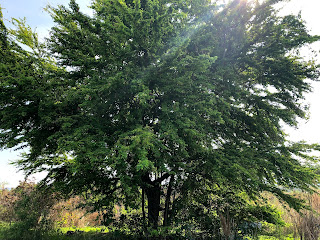Day 29: Word For Ants
 |
| This lush "damortis" growing in the banks of Amburayan river in my hometown Tagudin Ilocos Sur is the favorite treehouse of red or fire ants locally called "abuhus." |
F
or day twenty-nine of the Season of Creation let us ponder the harmonious cohabitation between ants and trees and among other living creatures. I am always amazed by the symbiotic relationship of the two. The ants need the tree for food, shelter and security which are the three basic necessities for survival. On the other hand the tree which is the host organism cannot survive without the help of the ants to defend its leaves from being eaten by other insects or herbivores. Ants, being omnivores, have soil-enriching wastes when they process their food or when they make their nests. These among other mutual benefits continue in a lifelong process. Indeed it is amazing how there can be thousands of ants cohabiting a single tree. What is even more amazing is how two ants can communicate without words. In the ant-world, there are fragrances called pheromones—from Ancient Greek φέρω (phérō) 'to bear', and hormone—that ants emit in order to send signals to each other. The ecological functions and evolution of pheromones have been a major topic of research in the field of chemical ecology. I call these chemical signals as "emanticons." There are alarm pheromones to warn danger, food trail pheromones to guide nestmates to food sources, sex pheromones to signal love-making and/or companionship, and many others that affect behavior or physiology.
I spent the first six years of my priesthood as a curé or pastor in a rural parish in Bukidnon Mindanao. I can say those six honeymoon years were a testament to a similar mutualistic relationship between the pastor and our parishioners. One cannot exist or survive without the other. Each is incomplete without the other. 8thWorker.us

Comments
Post a Comment